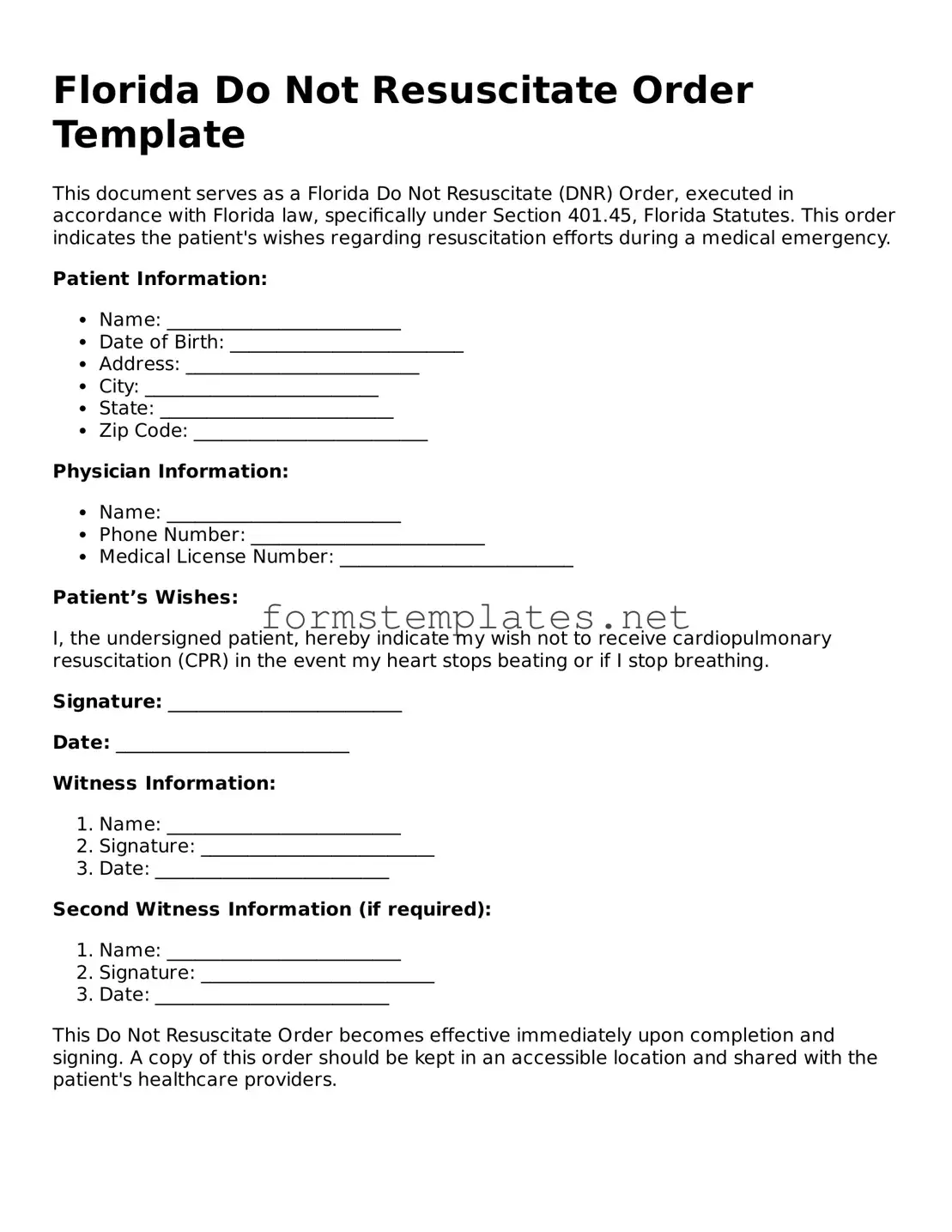Florida Do Not Resuscitate Order Template
This document serves as a Florida Do Not Resuscitate (DNR) Order, executed in accordance with Florida law, specifically under Section 401.45, Florida Statutes. This order indicates the patient's wishes regarding resuscitation efforts during a medical emergency.
Patient Information:
- Name: _________________________
- Date of Birth: _________________________
- Address: _________________________
- City: _________________________
- State: _________________________
- Zip Code: _________________________
Physician Information:
- Name: _________________________
- Phone Number: _________________________
- Medical License Number: _________________________
Patient’s Wishes:
I, the undersigned patient, hereby indicate my wish not to receive cardiopulmonary resuscitation (CPR) in the event my heart stops beating or if I stop breathing.
Signature: _________________________
Date: _________________________
Witness Information:
- Name: _________________________
- Signature: _________________________
- Date: _________________________
Second Witness Information (if required):
- Name: _________________________
- Signature: _________________________
- Date: _________________________
This Do Not Resuscitate Order becomes effective immediately upon completion and signing. A copy of this order should be kept in an accessible location and shared with the patient's healthcare providers.
